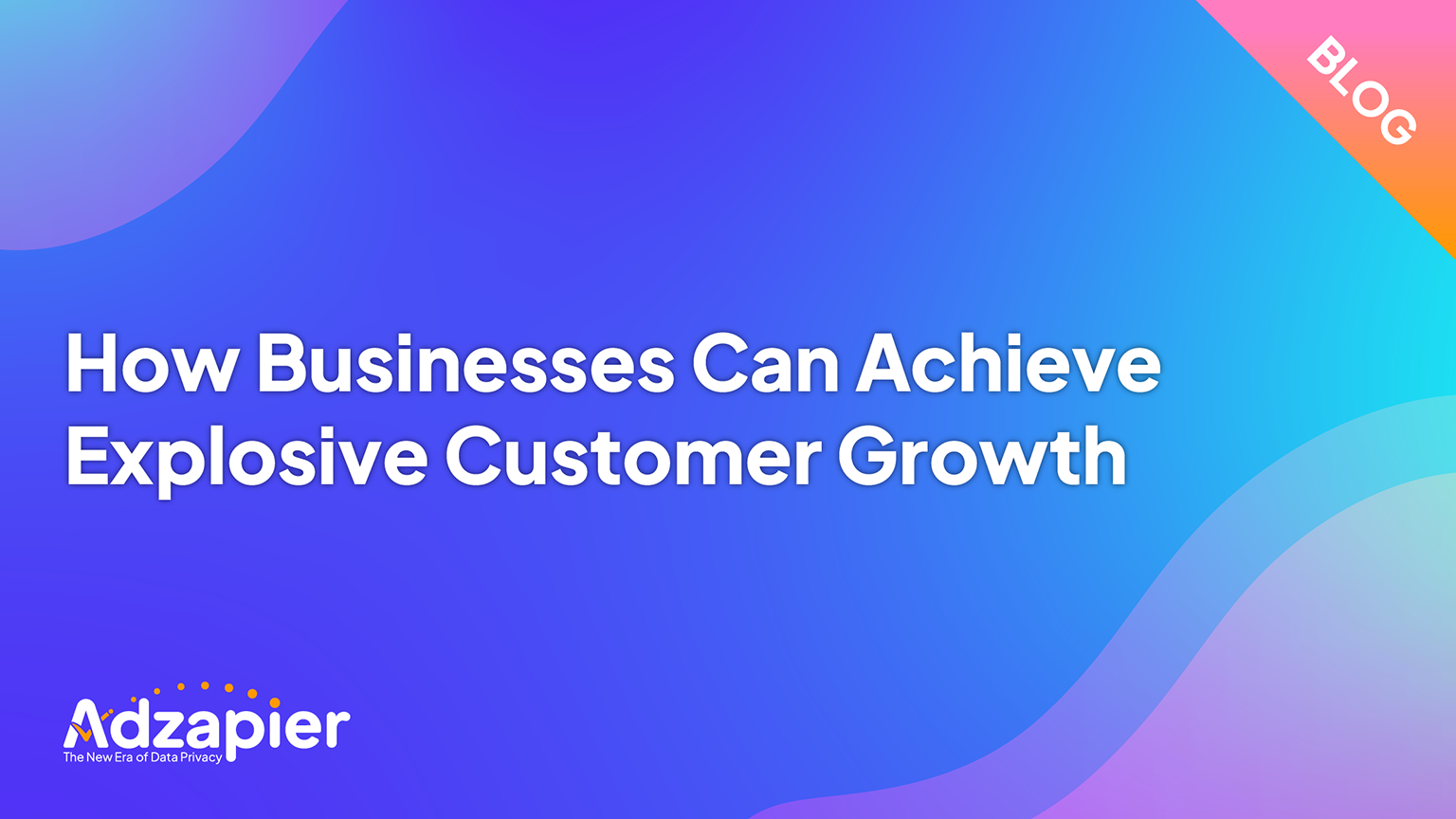
Who's in charge of customer experiences? Is it marketing, customer service, sales? Few questions are more important and equally complicated for businesses looking to improve retention and attract new customers.
The problem stems from a fundamental organization level. Different business units collect and use diverse data points from multiple sections of the customer journey. Whether it's point-of-sale, mobile interaction, desktop browsing, etc., the data remains scattered.
How Customer Data Platforms Can Achieve Explosive Customer Growth
Let's assume you lead one of these divisions and want to be more effective. You understand the importance of knowing your customer and that data visibility is required. As a result, you try to solve this problem by linking several platforms or creating your own customer data platform (CDP) to serve as a single source of customer data.
Remember, though; you're not the only one fighting this problem. There's a good chance someone else in another department is trying to solve the same problem. Customer data is everywhere. Most are in the form of a "Band-Aid" approach that someone created to solve a similar problem.
So, how do you implement a proper "single-source" solution that houses all of your customer information?
Use a Customer Data Platform.
The CDP might be sanctioned by the BizDev or IT team but should be owned by the marketing team. Make it a system designed to give clear insights into your customers for every business division regardless of where the data came from. From what we've seen, successful organizations follow these three rules with their CDP.
Rule #1: Get support from the top.
It's essential to start at the top of your organization for executive buy-in. The goal is to get everyone on the same page with the same customer intimacy, ROI, and loyalty goals. Many CDPs focus on easy out-of-the-box solutions, but that won't quite cut it with the vast number of data sources available.
And unless the entire organization takes the same approach, you're looking at yet another fragmented data source that compounds your current problem.
This is an important concept to grasp, and companies already recognize the problem. Some organizations have created key C-level positions such as Chief of Customer Experience to prioritize these efforts. Regardless of your approach, executive involvement is crucial. And if you want to be truly customer-centric, it needs to be from the top down.
Rule #2: Involve IT to empower users with self-service.
Data projects that don't include IT in the loop are bound to cause issues on several levels, primarily security. If your goal is to improve customer service, a security risk is the last thing you want. Involving IT from the beginning is an excellent way to minimize that risk. The IT department is also essential because of its involvement across an organization. A customer data platform unites data points from across the entire company. That's the point. Leaving IT out is useless.
Now granted, IT doesn't need to be the workhorse of the group. Instead, they should support you because you've given them the peace of mind to let you run the business and engage with customers. Your customer data platform should be cloud-based, eliminating IT from dealing with the complexities of on-site implementation and upkeep.
Ultimately, your goal is to empower business users throughout your organization with powerful self-service capabilities. The role of IT is to verify the technical components of the process. Once you've hit your stride, IT should feel confident enough to step back and allow marketing to take over. Even tasks like connecting new customer data sources should be handled elsewhere if the heavy lifting is done upfront.
All of this requires a proper balance between IT and business users. Security is essential along with proper integration. But platforms that rely on IT for every task will eventually bottleneck and fail.
Rule #3: Start with a PoC first.
An organization-wide customer data platform doesn't mean you have to tackle every source from day 1. Instead, start with a focused proof of concept (PoC) to find your low-hanging fruit. The goal is to see results ASAP.
A PoC should combine at least two data sources such as website interactions and POS transactions to show value. This will help kick off the cross-business cooperation needed to deliver a better customer experience.
Practical PoC projects tend to focus on one critical KPI. A few examples include:
Increase revenues by finding top customers and supplying them with personalized offers
Upsell with improved engagement
Develop better customer profiles and segmentation for targeted marketing
Bridge the online and physical point of sale
Enhance engagement by improving product features
Regardless of the path you pursue, don't underestimate its importance as a model. It will show what's possible with a proper enterprise-grade customer data platform. It will show your colleagues the power of a single-source, 360-degree view of the customer.
